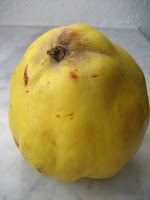 I have always thought that all yeast is organic yeast, pure natural product. So when I saw "organic yeast" in the store I was surprised. I checked the web page of the company that produces organic yeast and got more information. I am not a chemist but that stuff in conventional yeast sounds scary.
I have always thought that all yeast is organic yeast, pure natural product. So when I saw "organic yeast" in the store I was surprised. I checked the web page of the company that produces organic yeast and got more information. I am not a chemist but that stuff in conventional yeast sounds scary.
So one day I picked up the organic yeast and baked one of my favourite yeast-dough cakes, Swedish ring cake. I have made this cake many, many times so I knew that it would be easy to see a difference between organic yeast and conventional yeast, if any, when baking.
And yes there was a small difference. The cake did not rise as much as it does with the conventional yeast and the bubbles made by yeast were bigger, not fine like in conventional yeast. Usually the cake is quite round on the top and cuts can be seen nicely.
I am not sure if it all depends on the yeast or the flour, but in any case the difference was so small that I really can live with it. The cake tasted delicious as always.
I used kamut flour instead of wheat flour in the dough, and muscovado sugar instead of white sugar in the filling.
Ring cake
1 cake, 22 cm
 50 gr butter
50 gr butter1 dl milk
1 tsp ground cardamom
1 egg
20 gr fresh yeast
0,5 dl sugar
pinch of salt
50 gr butter
100 gr almond paste
3 tbsp muscovado sugar
egg and sliced almond for decoration
Melt the butter. In another pan heat the milk with cardamom until warm (not hot, yeast doesn't like hot). Pour the milk over the yeast and blend until the yeast is dissolved. Add melted butter, lightly beaten egg, sugar, salt. Add flour and knead until smooth. Let rise until double size, about 1 hour.
Blend the butter with almond paste and sugar. Role out the dough, 40x15 cm, and spread the almond paste filling. Role and form ring. Put in a round baking pan and every centimetre make a cut, 1 cm deep. Arrange the cuts one to the left and one to the right, just a bit. Cover with a tea-towel and let rise 1 hour.
Blend the butter with almond paste and sugar. Role out the dough, 40x15 cm, and spread the almond paste filling. Role and form ring. Put in a round baking pan and every centimetre make a cut, 1 cm deep. Arrange the cuts one to the left and one to the right, just a bit. Cover with a tea-towel and let rise 1 hour.
Paint with beaten egg, sprinkle with almond slices and bake in preheated oven, 200 C, for 20 minutes.












 The discs are dissolved in milk or water and the froth is made with a molinillo, a traditional Mexican froth maker.
The discs are dissolved in milk or water and the froth is made with a molinillo, a traditional Mexican froth maker. But in small towns in the areas where cacao beans are grown you can even buy small packages with cacao beans, sugar and cinnamon for mixing as you like and making your own chocolate at home. Yes, nothing can beat that!
But in small towns in the areas where cacao beans are grown you can even buy small packages with cacao beans, sugar and cinnamon for mixing as you like and making your own chocolate at home. Yes, nothing can beat that!

















 In Mexico corn for pozole is sold either dried or vacuum packed (picture). Outside Mexico it is usually sold canned. Vacuum packed corn does not need to be soaked over night but it still has to be cooked for 2-3 hours until the kernels open.
In Mexico corn for pozole is sold either dried or vacuum packed (picture). Outside Mexico it is usually sold canned. Vacuum packed corn does not need to be soaked over night but it still has to be cooked for 2-3 hours until the kernels open.















